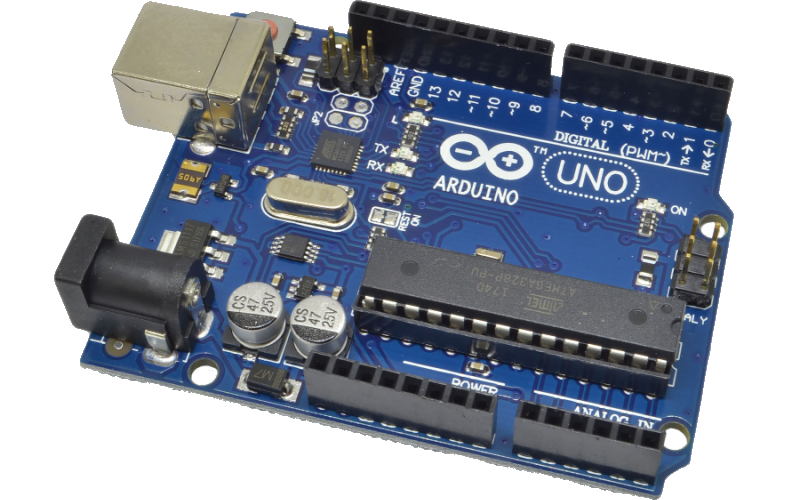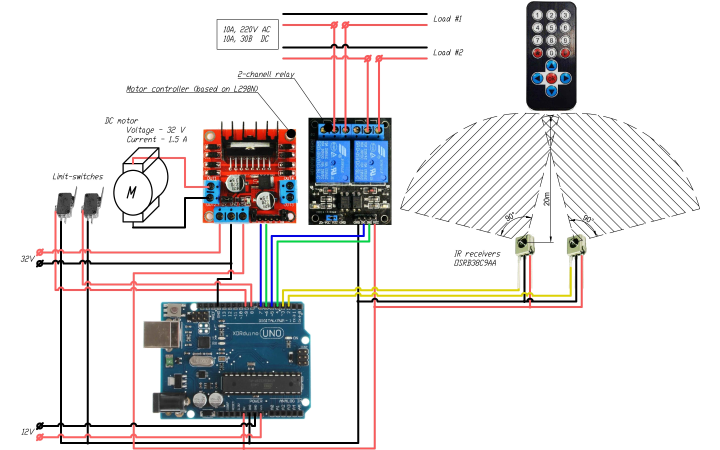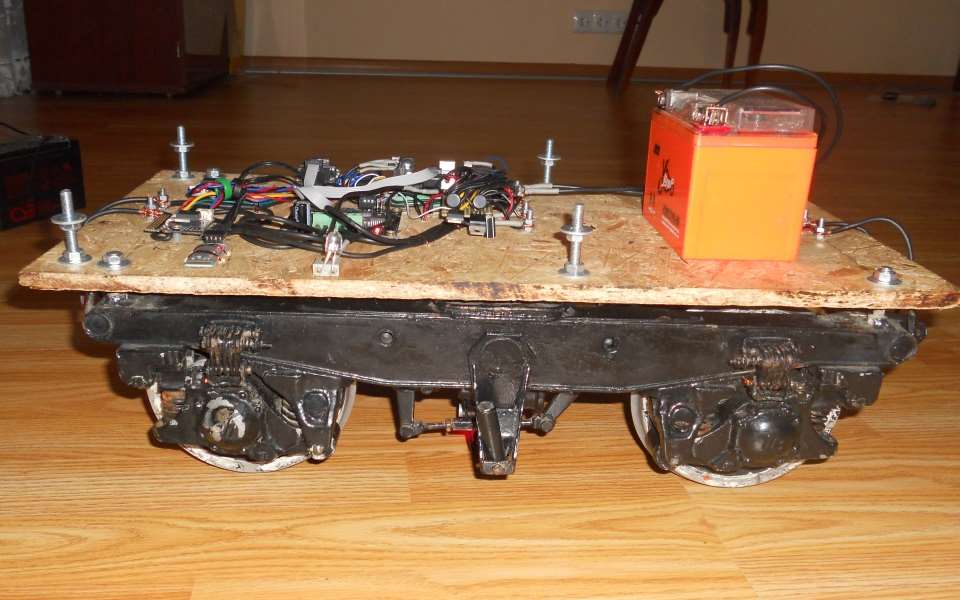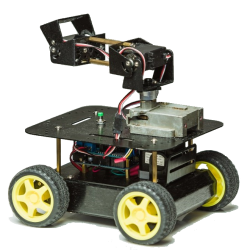DC motors

DC motors are a popular type of drive due to their lightweight, high torque, and ability to adjust the rotation speed over a wide range. Usually, the motor can be connected to DC power in normal mode. However, for smooth starting, speed control, and convenient control, connecting them through a separate motor controller that provides all the necessary functions is best.
Wireless Motor Control System for turning security cameras, opening gates, blinds or solar panels

Using infrared receivers and a control panel, it provides remote control of electrical equipment functions. To ensure convenient control without the need to accurately point the remote control towards the control system, several infrared receivers are installed, with overlapping fields of view
Automatic solar tracker for rotation of solar panel based on illumination measurement
The system is installed on solar panels with a rotation mechanism based on a DC motor. Designed to turn the solar panel towards higher illuminance to maximize luminous flux. Two light sensors are located on the panel - at an angle to the sides of rotation. If the illumination on the left or right sensor is higher by a certain amount, the panel will rotate in this direction.
Mobile platform for testing electric motors

Mobile platform for testing electric motors. Allows you to control the movement of the platform in real time, which moves along the test route and take parameters from the sensors.
Creating your own DC motor control library

Article-series: Arduino, using DC motors #4
We have developed a class that can manage a DC motor, but if we intend to use it in multiple projects, we will have to duplicate the same code for each project. To avoid this, it would be wise to extract all the repetitive code and place it in a separate library. This library will then be connected to the project in the same way as the standard Arduino libraries.
Soft starting a DC motor using timers

Article-series: Arduino, using DC motors #2
When it comes to controlling DC motors, there are times when you may need to make sudden changes in speed, such as going from 0% power to full power or changing direction. However, this type of operation requires very high currents, much more than simple movement. To address this issue, it's possible to implement a smooth start for the motor by utilizing both the standard delay function delay() and timers.
Connect a DC motor. Microcircuit L298P

Article-series: Programming Arduino from scratch #7
Article-series: Arduino, using DC motors #1
Consider the option of connecting a conventional DC motor to the controller, which can be used, for example, to move the robot or perform useful work. To do this, we will use a motor controller based on the common L298P microcircuit.
Creating a class for working with DC motor

Article-series: Arduino, using DC motors #3
One controller can control multiple DC motors. Since the control code will be the same, that is, allocate a separate class for it. Then, when adding a new engine, it will be enough to add just a few lines, and not copy the same functions and variables for each.

 Books
Books Technology
Technology Electronics
Electronics DC motors
DC motors Raspberry Pi Controllers
Raspberry Pi Controllers Relay
Relay Temperature sensors
Temperature sensors All tags
All tags Programming
Programming Weaponry
Weaponry Projects
Projects